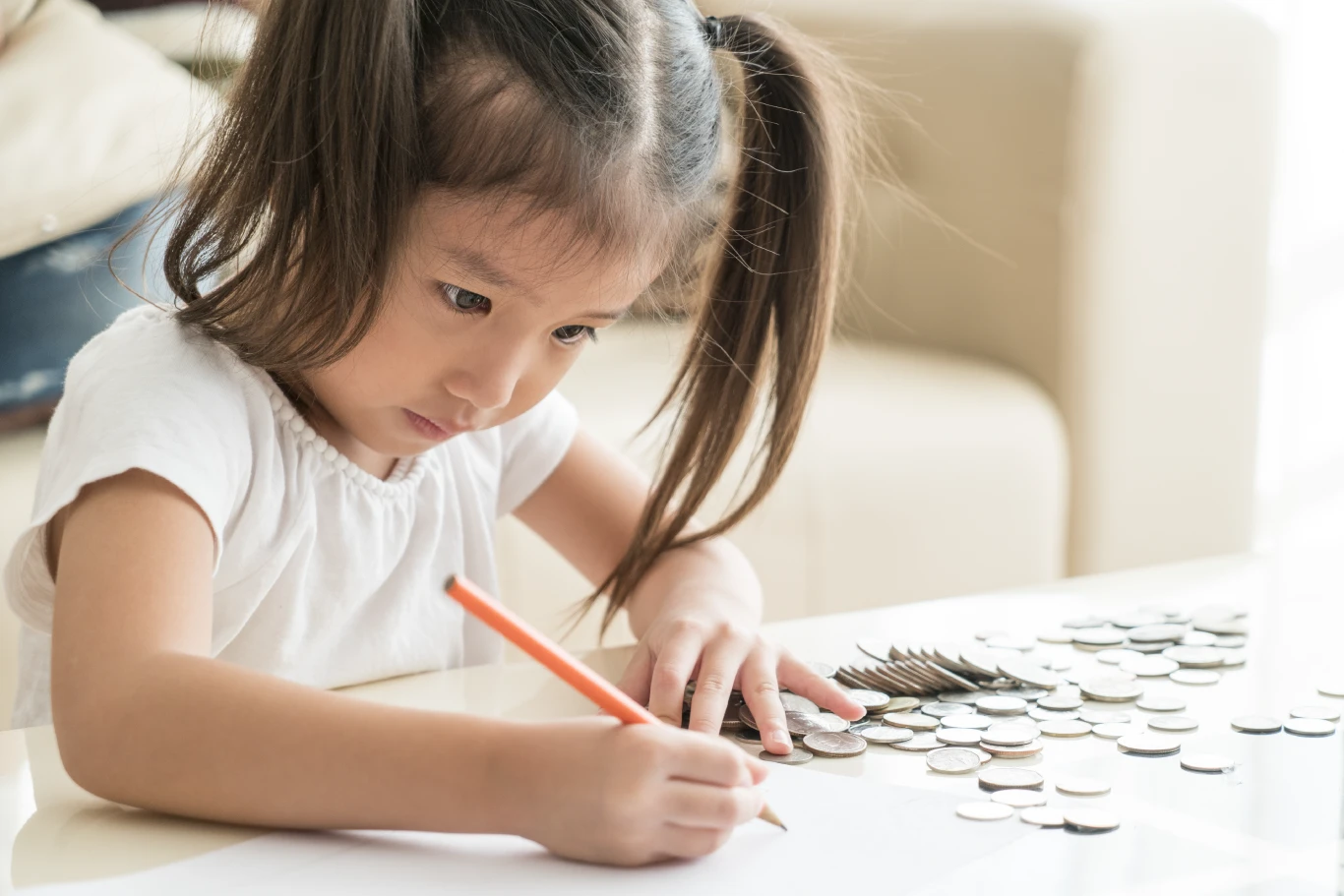By 2025, most students in Singapore will be able to make purchases via electronic payments instead of cash when they are buying food from their school canteen or supplies from their school bookshop.1
If they’re making purchases in school, regardless of how small, they would need to understand the connection between money and value.
Teaching children about money2 and its use has always been an important subject. Now, as money increasingly becomes ‘invisible’, it’s equally important to educate children on the material and immaterial value of things.
Material Value
Helping your children understand material value will equip them with skills that will benefit them in making better financial decisions in the future. This knowledge will cover all purchases, from a cup of bubble tea to buying their first house.
You can start teaching them from young. Studies have shown that from the age of seven3, children are able to understand the value of money. How you discuss money around the house and how you respond to your child’s monetary needs and wants will have an impact on their money habits. Do you buy them everything they want or guide them to make purchasing decisions based on cost and value?
Remember that your child is like a sponge, they see and learn from what we do. They then start to mimic our behaviours, so it is very important to model the right behaviours to them.
The advent of cashless payments has also changed many things, making money invisible. You’ll want your child to continue talking about money as something tangible. For instance, you could divide their allowance into physical and digital money. Help them learn that ‘invisible’ spending still costs money in the real world.4
An online resource set up by the Prudential Foundation called Cha-Ching5 might be your best first stop; with fun characters, informative videos, and worksheets, you can teach your children monetary concepts like delayed gratification, budgeting, and even investing!
Immaterial Value
The value of things outside of their material value is also an important lesson to teach your children.
Collections are a great place to start. Value can be found in the simplest of things and collecting items can help foster a sense of curiosity about the world and their place in it. Kids can collect anything – from coins and trading cards to rocks and shells. The object isn’t important, it's installing the value around collecting unique and interesting things.
Collections may appreciate in material value in the future, as long as there’s scarcity and demand. Their hobbies and interests today could present an opportunity to discuss the concept of investments and value appreciation.
Consider teaching children the value of charity6 and the power of giving back to the community. Listen and understand what’s important to them to determine the kinds of charitable activity that best suit their interests and personality. By joining in, you can show them that work doesn’t always need to be for a monetary end.
Additionally, you could start teaching your children about the importance of living sustainably7. This could be as simple as discussing ways to conserve water and electricity or showing them how to reduce their carbon footprint by taking the train, walking or cycling. You could also make it fun by growing an edible garden in your home or take excursions to some of Singapore’s high-tech veggie farms8.
Value is a multi-faceted, evolving, and personal concept. As digitalisation becomes the norm there is a fear about the loss of human touch as everyday interactions are automated and become simply transactional. It’s important to teach children that the value of something can be expressed in a variety of ways, not necessarily just in terms of its monetary value.

